Sound
There are at least two types of waves that connect to vortices, peripheral and core. The first are waves that connect to the periphery of a vortex, and thus only apply to vortices that have a periphery. The second are waves that connect to the core of a vortex, and thus only apply to vortices that have a core. Core waves are transverse waves. The back and forth vibrating motion of those waves is perpendicular to that of the direction of travel of the wave. Peripheral waves are longitudinal waves. The back and forth vibrating motion of those waves is parallel to that of the motion of travel of the wave.
One type of peripheral waves are pressure waves (There's a possibility that all peripheral waves are pressure waves). And one type of a pressure wave is a sound wave, which includes both audible and inaudible sound waves. Sound waves touch our physical world the most in the region close to the central balance point, It is there that sound waves get blocked the most by physical objects..
Core waves are always electromagnetic waves. Core waves touch our physical world the most at the zero point. It is there that electromagnetic waves get blocked the most by physical objects.
This page is about the sound waves, and sound waves are longitudinal waves. When sound is transmitted through air its sound waves travel from one location to a person's ear, but no object, no particle, no volume of matter travels from the start location to the person's ear. Instead, kinetic energy is passed on by the air through the motion at which the volume of air is distorted. The images below show the motion of pressure waves as they propagate through a medium. Notice that the oscillating movement is parallel to the direction in which the wave travels.
Do not let the movement in the image above mislead you. Look carefully and you'll see that none of the vertical lines are moving to the right. All the lines make an oscillating movement around a fixed center position. In the case of sound waves, one form of pressure waves, the movement is spherical outward, illustrated in the image below.

Now, in all but a few cases we can not see these waves, they are invisible to the human eye. But at the center of these waves there is always a vortex. And some of these vortices are visible to the human eye. Every vortex in the sequence that has a periphery belongs to a certain type of wave, within a well defined dimensionality level. Thus these visible vortices reveal the presence and the type of invisible wave that propagates within a medium that can transmit sound.
Not all sound waves are audible. Sound that is too high dimensional (yin), or sound that is too low dimensional (yang), is inaudible to us humans. The type of vortex that is present at the center (or at the starting location of these waves, if the vortex is more directional instead of spherical) of these waves can also reveal whether the sound is audible or inaudible. The inaudible sound can either be infrasound or ultrasound.

For humans, hearing is normally limited to frequencies between about 20 Hz and 20,000 Hz, this is called audible sound. Sound that is lower in frequency than 20 Hz is called infrasound. These sound waves lie outside the normal range of human hearing (20 Hz down to 0.001 Hz) and thus can not be heard. This frequency range is utilized for monitoring earthquakes, charting rock and petroleum formations below the earth, and also used to study the mechanics of the heart. Infrasound is characterized by an ability to travel long distances and getting past objects with little disturbance. Whales can communicate over hundreds of miles using infrasound.
Sound that is higher in frequency than the upper limit of human hearing, is called ultrasound. Although this limit varies from person to person, 20 kilohertz (20,000 hertz) is approximately the upper limit for human beings being able to hear sound. Ultrasound is used in many different fields, typically to penetrate a medium and measure how the sound reflects. How it reflects can reveal details about the inner structure of the medium, a method also used by animals such as bats for hunting. Sonar is a well known application of ultrasound. Sonography is also used to produce pictures of fetuses in the human womb. There are a vast number of other applications as well. Some animals, such as dogs, cats, dolphins, bats, and mice can hear ultrasound, which is how a dog whistle works.
What I am going to explain on this page is that infrasound is linked to low dimensional vortices, and that ultrasound is linked to high dimensional vortices. In between is the audible sound region which is characterized by the wave having a dimensionality close to the central balance point. How we are able to figure out that these types of vortices are linked to those types of sound is explained by a series of clues that are obtained from different sources.
Audible Sound
First Clue – Drums
_ByStephanCzuratis(JazzFace)_UnderCCBYSA2.5.jpg) Image by Stephan Czuratis (Jazz-face), under CC BY-SA 2.5 license |
_UnderCCBYSA3.0.JPG) Image by Dr clave (Wikimedia), under CC BY-SA 3.0 license |
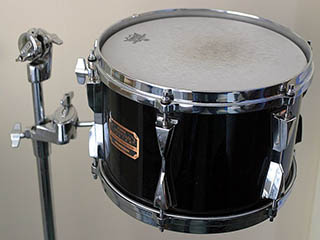 Image by Marco van den Hout, under CC BY-SA 3.0 license |
The first clue in understanding where sound comes from comes from the drum. The drum is one of the simplest devices that produces musical sound. From judging by its shape, it is most likely that the drum operates on the movement of a bulb vortex, an ellipsoidal spiral. When you hit the drum, the vibration within the closed container creates an oscillating bulb vortex. This vortex is what produces sound waves, that are transmitted through the walls of the container.
The bulb is located on the central balance point. Thus now we know that the central balance point is a location in the transformation sequence where sound comes from. This is a good start for understanding the source of sound. But can sound also come any other random location in the sequence? For that we look at the next example.
Second Clue - Smoke Ring Generators
_Edited.jpg)
Images are screenshots from movie by Peter Terren. Images were edited with text and lines
The next clue comes from a smoke ring generator. I once made a smoke ring toy myself and what I noticed was the puffing sound that the air makes as it is pushed through the hole. The smoke ring generator is shaped like a drum, which was discussed as the previous example. But this one has a hole in one of its ends, and can blow vortex rings when you hit on the other side of this 'drum'. These vortex rings are revolutes, the fourth spiral in the sequence. The useful information that this device provides us is its audible sound. The only sound that is audible is the sound emitted when you hit the drum, shortly after there is no sound. When the vortex ring forms and travels away from the smoke ring generator, it does so completely soundless. This tells us that the bulb can produce audible sound, but the revolute can not.
THE REASON THAT SMOKE RINGS DO NOT APPEAR TO PRODUCE ANY SOUND IS BECAUSE THEY ONLY PRODUCE ULTRASOUND, WHICH IS HIGHER DIMENSIONAL THAN AUDIBLE SOUND
The vortex ring toy is a beautiful example of how three different vortices, a spiral, a ladder and a spiral, connect in a sequence. The bulb is formed inside the drum, the pylon is formed at the opening, and the revolute is formed outside the vortex ring generator. The same happens when you blow bubble rings or smoke rings with your mouth. The inside of your mouth is what forms a bulb. Only thing you need to keep in mind that when smoke is used to create a vortex ring, the pylon does not really form, it looks more fussy then the revolute. This is because the pylon is the state of equilibrium for smoke, thus a pylon can not be visible in smoke.
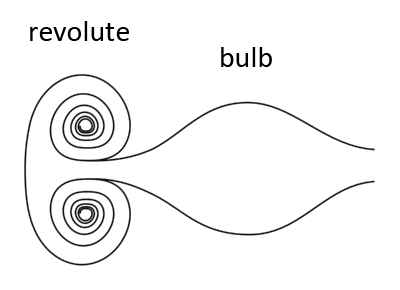 |
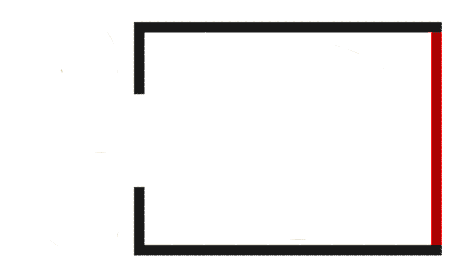 |
But does the pylon emit sound? This example does not give a clear answer to that. In smoke the pylon doesn't form, because the pylon itself is the state of equilibrium for smoke. If we use only air then we do not see any vortices so this leaves us in doubt on whether a pylon forms. Some of the sound that you hear after hitting the container could be from the pylon, but it is the short timing between the bulb and the pylon that keeps us in doubt. To find out more, we need to take a look at yet the next example.
Third Clue - Megaphones and Gramophones
_PublicDomain.jpg) Image by Flaxseedoil1000, (Wikimedia) |
_PublicDomain.jpg) Image by Szilas, (Wikimedia) |
The third clue comes from some devices that emit sound, one is the megaphone, the other is the gramophone. Both look like the shape of a ladder vortex. Except at first glance it is not clear whether this shape is a pylon or an amplicone. A pylon is higher dimensional than an amplicone. Thus the sound waves that are emitted from that vortex shape are more directional than the sound that is emitted from an amplicone. It is most likely that the megaphone functions as a pylon, and that the gramophone functions as an amplicone. The first casts its sound waves towards an audience, the second emits its sound waves more evenly into the room.
The difference as to how one of these shapes can act as a pylon while the other, closely similar shape acts as an amplicone, is determined by the sound source at the start of the vortex. The sound source is lower dimensional with the gramophone then it is with the megaphone. The gramophone does look a bit more like an amplicone and the megaphone does look a bit more like a pylon. Besides this, a megaphone is also not completely hollow but has a solid core at its end, thus the movement of the vortex opens up at its end where the next vortex in the sequence, the revolute, should start.
So next time we see a sound instrument with a shape close to this, we should be aware that the shape could be one of both, a pylon or an amplicone. You need to look for more clues to determine which one is which.
Fourth Clue - Spiral Shaped Sound Speakers
I've found two speakers in the shape of a spiral. Both these speakers are claimed to produce very good sound. The shape of these speakers was the result of continuous experimentation. One is the Cornu Compact Spiral, the other is the Bowers and Winkers Nautilus Speakers. These two speakers show that the high end of the swirl is one location where sound can be emitted.
Cornu Compact Spiral
These speakers are horns split into four sections, which are wrapped around each other into a spiral. This spiral starts in the center with two arms, which further out splits into four arms. The result is that the speakers are in effect square panels with four mouths around it's edge. The sound source (which in this case are the speaker drive units) are placed in the center of the spiral. It is said about the sound that:
The bass, although rolled off, is even and free of peaks and dips, and the design and construction are free of resonance and coloration (unwanted extraneous variations in the frequency response of a loudspeaker). This gives a very good loudspeaker, which has a very open, uncolored and dynamic sound.
 Images by Cornu GmbH |
 |
The shape of this spiral speaker is that of double swirl. But the arms of the swirl have a square cross-section instead of round, because of the simplicity of the design. The spiral is also more angular at its center, producing more compression then at the outer ends of the spiral arms. The square cross-section, the splitting of the arms in four arms, the angularity of the spiral, those are all factors that are bound to have an influence on the quality of the sound, yet I myself do not know in what way.
What I do know is that the sound exits at the end of the swirl spiral, thus at the start of what should be the amplicone. This tells us that not only the end of the amplicone, but also the start of the amplicone emits audible sound. The second location is a whole dimension level lower than the first. Thus the range in which audible sound can be emitted is at least from the start of the amplicone (this example) to the end of the pylon (the megaphone example).
Bowers and Winkers Nautilus Speakers
The Nautilus is a product by the Steyning Research Establishment which was launched in 1993, after 5 years development. It is the result of a groundbreaking research and development program which is said to achieve, as near as possible, the perfect loudspeaker. The technology used for this model has subsequently been used in the whole Bowers and Winkers product portfolio. The company considers this to be their flagship product, and the very pinnacle of technological innovation.

Images by Bowers & Wilkins
This type of speaker is build in the shape of a single swirl. A difference with this speaker and the previous example with the Cornu Compact Spiral, is that this spiral follows the shape of the swirl more exactly. It is also less simple, more difficult to produce because of the more complex shape. Again, this shape for a speaker confirms that the end of the swirl, and thus the start of the amplicone, is where audible sound can be emitted.
Because the audible sound is emitted at a more low dimensional location in the transformation sequence, the sound waves are also more spherical, and distribute more evenly within the space of the environment. Not much than that I can say that I know about the effect that the shape of the spiral has on the quality of the sound, all these causes and effects still need to be discovered and understood. This spiral should however have a different end result on sound than the previous example has.
Fifth Clue - Sound Horn
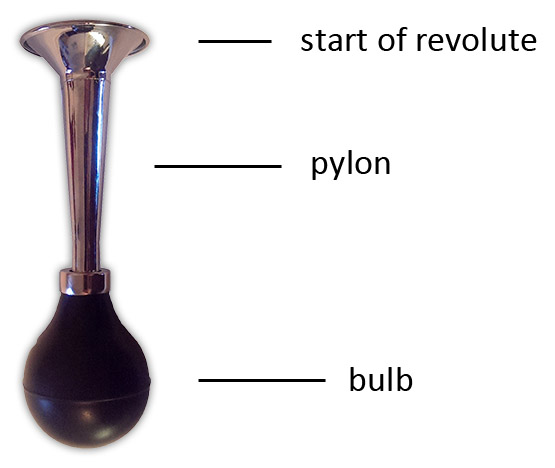
This is another example with sound emitted at the end of a pylon. This one confirms that the shape of the sound horn is the shape of a pylon because a bulb, which is the previous vortex in the sequence, connects at its base. The sound waves are here more higher dimensional than in the previous two examples, and indeed as we expect, more directional. With this example we find a confirmation that the megaphone is thus a device that operates on the vortex movement of a pylon.
Sixth Clue - String Instruments
On the page titled 'More About Vortices' a phenomenon called the dedimensionalized vortex shapes was introduced. These are shapes of vortices formed by human made objects or the shape of the environment that induces the effects of specific known type of vortices, except that these vortices are simpler geometric version of the real vortices. Simpler in the sense that their shape is defined by two dimensions instead of three, and is extruded in the direction of the third dimension. There can be a dedimensionalized version of a bulb, a dedimensionalized version of a pylon, a dedimensionalized version of a revolute, etc. The Cornu Compact Spiral discussed earlier was in some ways also a dedimensionalized vortex type. Below are few of such examples.

These same kind of shapes we also find when we look at musical string instruments. The box of a guitar is shaped like two bulbs connected with a bridge. The reason for this is that the sound within the box has to resonate. The bulb is the vortex that lies exactly on the central balance point, which is the equilibrium of air. For sound to resonate it has to go from expansion to contraction within the audible sound region of the transformation sequence. Both ends of the box are the same vortex but one is slightly bigger than the other. A larger scale means higher dimensionality, and smaller scale means lower dimensionality. Thus the shape of the large end of the guitar box is that of a higher dimensional vortex than that of the small end of the box. And when air moves inside that box it takes the form of those vortices, thus creating vortex movement. By going back and forth between the large bulb and the small bulb the vortex goes back and forth between contraction and expansion.
| Banjo | Mandolin | Guitar | Contrabass |
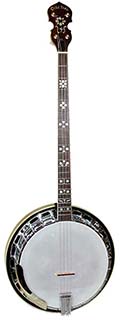 |
 |
_UnderCCBYSA3.0.jpg) |
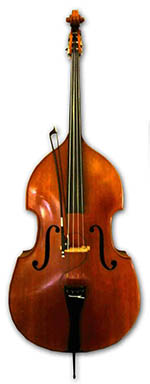 |
| bulb | bulb-amplicone | bulb-exobar-bulb |
bulb-exobar- bulb-amplicone |
Banjo by Wayne Rogers, under CC BY-SA 3.0 license. Mandolin by Grove Instruments, under CC BY-SA 2.0 license. Background was removed. Guitar by PJ (Wikimedia), under CC BY-SA 3.0 license. Contrabass by Andrew Kepert, under CC BY-SA 3.0 license. Image was cropped.
This does not just apply to the guitar, but to other similar string instruments as well. Those instruments show a combination of one to several vortices ranging from bulb, amplicone and bridge with two bulbs. All these shapes are dedimensionalized versions of vortices close to the central balance point. Notice that the cello only has a bulb, thus even without an amplicone or pylon there can still be some resonance, but the cello does not resonate as good as the guitar or string bass.
An interesting thought experiment is when you think about the idea of playing these instruments underwater. Humans can hear sound underwater. But the equilibrium of water is two dimension levels lower than the equilibrium of air. So can a guitar resonate underwater? I think it can probably not. What you at least can expect is that the sound will not sound great. For a musical instrument to resonate better underwater the bulb, bridge and amplicone would need to be replaced with a swirl, troth and helicone, if that is possible.
So all these clues together have taught us that all sound comes from a region close to the central balance point. If moved too far from that central balance point than no audible sound is produced. Vortices located close to the central balance point can produce audible sound. Vortices located at a too far offset from the central balance point, can not produce audible sound. This allows us to give a quick definition of sound.
AUDIBLE SOUND = PRESSURE WAVES EMITTED FROM A MESOCYCLIC VORTEX IN AIR THAT IS LOCATED AT A CLOSE RANGE FROM THE CENTRAL BALANCE POINT
Ultrasound
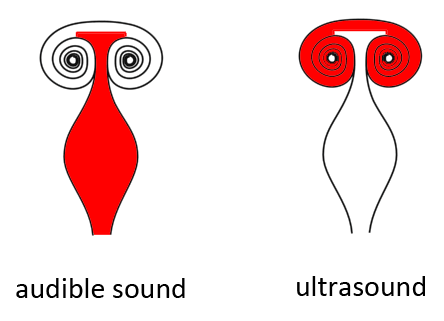
Ultrasound is produced by high dimensional peripheral vortex movement in a medium that can transmit sound, like air. The highest dimensional audible sound ends at the high end of the pylon. When the formation of the spiral revolute starts, and the movement turns around the corner, thats where the audible sound ends. From here on, the sound is propagated as ultrasonic sound, sound with a high frequency, higher than 20 kHz (20,000Hz). The image above only shows the revolute as a vortex that produces ultrasound, but the vortices that you cannot see in the image because they are too small to see are the vortices at the center inner end of the revolute. Some of these vortices, like the laminar belt and the venus belt are also part of the ultrasound region of the sequence. Below I discuss two phenomena that show that this classification is likely to be correct.
The First Clue - Ultrasound Gel
Hospitals, clinics, and other facilities use ultrasound technology for diagnostic purposes. The transducer is an ultrasonic device that is used to send and receive these sound waves. It works by passing sound waves into a person’s body. Once there, they don’t remain for long. Instead, they bounce off the organ or other part of the body the doctors are trying to view. The sound waves then move back through the transducer, and they are ultimately analyzed by a computer, which allows the analyzed sound waves to be viewed on a monitor or printed out for doctor or patient use. Ultrasound gel is a type of conductive medium that is used in ultrasound diagnostic techniques and treatment therapies. It is placed on the patient’s skin at the beginning of the ultrasound examination or therapy. The transducer is then placed on top of it.

If you ever been to a hospital and had ultrasound diagnostics performed on you, you must remember the gel because its very cold. Perhaps you wondered why the gel was needed, at least I know I did. But I never imagined finding the answer myself. If you read the page about states of equilibrium then there's a good chance you too already understood what the answer is.
The revolute is the state of equilibrium for gelatin. Gelatin is driven by the movement of the revolute, and this revolute is a high dimensional vortex with a periphery, and so it can produce high dimensional acoustic waves, thus ultrasound. Apparently, when sound waves travel through gel, the gel influences the frequency of those sound waves. If the transducer would send and receive even higher frequency ultrasound then instead of gel we would need to use oil or a greasy fat. But then the sound waves would no longer bounce enough inside the body and would go through the body instead (although those type of sound waves perhaps will bounce of in parts of the body that are higher dimensional, like very soft tissue, some liquid and gas).
The Second Clue - Dolphin Rings
Take a look at this video below. You might have seen it before because it has been a popular video on the internet. There are more versions of this, similar videos showing dolphins create and play with bubble rings.
Many people who watched this video asked themselves: "how do they make these rings?". The rings suddenly appear in front of the dolphin. Some people have suggested that the ring is formed by the air that is ejected from the blowhole. But these thin rings can not be formed that way. You can create bubble rings by blowing air through a hole, just the same as it is done with a vortex ring toy or blowing bubbles with your mouth when you're underwater (Beluga whales can do that too, click here to watch). But then the vortex starts as a revolute and then progresses from a thick torus to a thin torus. In this video, the vortex appears as a very thin ring, instantaneously. We humans haven't been able to reproduce these rings with any sort of air blowing device. Another explanation, one that is found on several websites is this more elaborate explanation from a scientific standpoint:
An explanation of how dolphins make these silver rings is that they are "air-core vortex rings". Invisible, spinning vortices in the water are generated from the tip of a dolphin's dorsal fin when it is moving rapidly and turning. When dolphins break the line, the ends are drawn together into a closed ring. The higher velocity fluid around the core of the vortex is at a lower pressure than the fluid circulating farther away. Air is injected into the rings via bubbles released from the dolphin's blowhole. The energy of the water vortex is enough to keep the bubbles from rising for a reasonably few seconds of play time.
If you look at the video it does not seem very likely that the dorsal fin has anything to do with the formation of these bubble rings. It does not even come close to the position where the ring suddenly appears and you can see by the way that the ring forms that it is not formed by the two ends of a straight former invisible vortex being drawn together into a closed ring. I actually find the first explanation more plausible than this one. If I did not knew anything more, then I would have believed that it is the blowhole that forms the ring, despite that we humans can not reproduce these thin rings by blowing air through any sort of hole.
But there is one thing I noticed when I was looking at this video that I haven't found brought up anywhere else. One detail that is quite obvious and that makes it feel like a surprise that no one mentioned this before. And this is that the position where the ring appears is exactly right in front of the dolphin's melon. The melon is an ovoid shaped fatty organ found in the forehead of all dolphins and is believed to be used in echolocation. Echolocation operates on high frequency sound waves, or ultrasound. And ultrasound has the ability to travel through solid material. Ultrasound is also more directional than audible sound or infrasound.
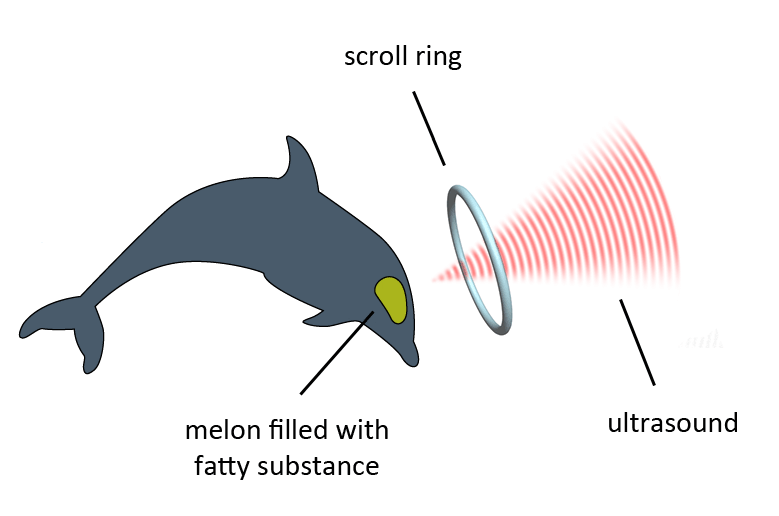
What I believe is happening is that the center of this bubble ring is also the exact center where the beam of ultrasound is cast through. And this is because the beam of ultrasound is that what creates those perfect rings, together with the bubbles that are blown from the blowhole. The dolphin has learned that when he blows air through his blowhole, and makes a certain sound at the same time, then this ring appears for him to play with.
The melon is filled with a fatty substance, the state of equilibrium for that fatty substance is the scroll ring. The scroll ring is what gives its characteristics to buttery fat / cholesterol. It is very likely that this fat helps to achieve the right sound frequency. If this is true, then different substances can produce various sound frequencies by changing the properties of the sound that passes through them. This is the same principle as the previous example with the ultrasound gel.
If the substance is gelatin-like then the ultrasound forms a revolute vortex / revodome
If the substance is an oily fat then the ultrasound forms a belt vortex
If the substance is a buttery fat then the ultrasound forms a scroll ring / tube ring
So far, this only seems to work with organic materials, I'm not sure if we can achieve the same effect with inorganic materials. And I do not know if the shape of the dolphin's melon plays an additional role in achieving this effect.
Without the air that is blown from the dolphin's blowhole the ring does not form. These bubbles collide, or are influenced by the sound waves and then form the vortex with the same dimensionality as those waves. I'm almost certain that this is the correct explanation for how these dolphin's create these rings. But we only know for sure the moment we are able to reproduce them exactly as those made by the dolphins.
THE EXPLANATION THAT THE DOLPHIN RINGS ARE GENERATED FROM THE TIP OF THE DORSAL RING IS INCORRECT. THE RINGS ARE GENERATED BY ULTRASOUND WAVES EMITTED FROM THE MELON AND THAT FORM A RING WHEN THOSE WAVES COLLIDE WITH THE BUBBLES THAT ARE BLOWN FROM THE DOLPHIN'S BLOWHOLE
The reason that these high dimensional waves collide with the bubbles must be because the dimensionality of these waves is close to that of the bubbles. So this reveals to us that bubbles are high dimensional, close in the range of that of a scroll ring. I think this is the right moment to formulate a definition for ultrasound.
ULTRASOUND = PRESSURE WAVES EMITTED FROM A HIGH DIMENSIONAL MESOCYCLIC VORTEX WITH A PERIPHERY WHOSE DIMENSIONALITY LEVEL IS LOCATED BEYOND THE START OF THE REVOLUTE (3.75D)
Infrasound
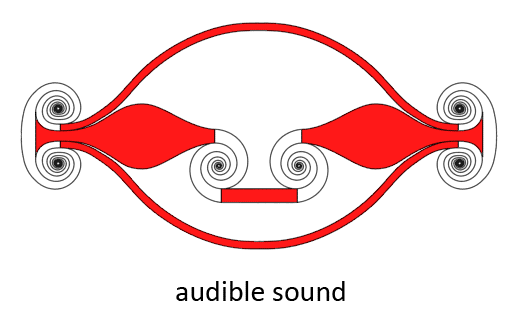
As ultrasound is produced by high dimensional (yin) vortex movement in a medium that can transmit sound, so is infrasound produced by low dimensional (yang) vortex movement in a medium that can transmit sound. The lowest dimensional audible sound starts at the low end of the amplicone. All vortices that are lower dimensional than the amplicone, and which have a periphery, are vortices that are able to produce infrasonic sound. The image above only shows the swirl as a vortex that produces infrasound, but the vortices that you cannot see in the image because they are too small to see are the vortices at the center inner end of the swirl. Some of these vortices, like the helicone and helibar also belong to the infrasound region of the sequence. Below I discuss three phenomena that show that this classification is likely correct.
The First Clue - Tornadoes
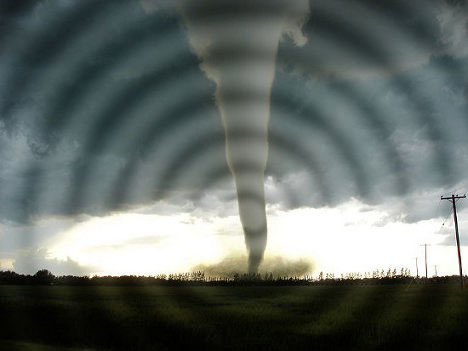
Image by Justin Hobson, under CC BY-SA 3.0 license. Image
was edited by adding a wave pattern
A tornado is one weather phenomenon that is known to produce infrasound. The frequencies of these sound waves vary between 0.1 and 10 Hz. This is a very useful clue because we know what kind of vortex a tornado is and what its position is in the transformation sequence. A tornado is a helicone and the helicone is the lowest dimensional vortex in the sequence that has a periphery. This is yet another clue that tells us that low dimensional vortices are linked to low frequency sound.
The good thing about this example is that we now also know the range of frequency of a helicone. With more good examples we should be able to find all the appropriate frequencies for all the vortices in the sequence.
The Second Clue - The Trachea of the Trumpeter Bird
The trachea is the windpipe of mammals and birds. In the vast majority of birds, the trachea is, apart from the syrinx (vocal organ), pretty simple. However, several groups have evolved incredibly elongate tracheae where extra loops, hoops and other deviations increase its length, sometimes to an excessively large degree. One of these birds is the trumpeter bird. The shape of the trachea varies a lot between sexes and different populations of trumpeter birds, but at its most extreme it consists of a spiral with two arms each making two to two and a half full rotations on the animal's ventral surface.

Images from Tracheal elongation in birds-of-paradise by Clench, M. H. 1978.
The Condor 80, 423-430. Right image was edited with text and lines.
The obvious question is: Why do these birds of paradise have such excessively long trachea? If you see these trachea and think they have no purpose at all and that it is just a random fault of evolution than you are not thinking in the same lines as mother nature. Nothing in nature is without meaning, and among the buildings stones of our natural world you will never find a stone too many or a stone that's missing, although we humans often interpret that what we fail to understand as mistakes. But if you look at the picture of this spiraling windpipe, taking up a huge amount of space inside the bird's body, do you think that mother nature was confused when she forged this bird?
The reason I think is for this coiling of the windpipe is that it forms a double swirl. Sound that goes through this windpipe makes a vortex movement similar to that of the swirl, thus the sound becomes lower dimensional. Lower dimensional sound is lower frequency sound, thus infrasound. As you can see in the picture, there is a bar at the center of the spiral, something closely similar to the bar at the center of a barred spiral galaxy. It is likely that the air that goes through the bar forms a helibar vortex. In that case the sound is even lower dimensional. Now, a problem that exists with these assumptions is that I haven't been able to confirm if these birds truly do use infrasound. Until someone can affirm whether they do or do not, none of these claims are certain. But the beauty of this example is that the shape of the trachea is actually very simple and easy to simulate by simply bending a pipe or tube and blow sound through it. A simple experiment can give the answer.
The Third Clue - Wind Turbines
Wind turbines are a source of infrasound. The reason for this is that the air that flows past the rotor blades makes a rotational movement in a single direction. This forms a helical air vortex, closely resembling a helicone or helibar. This again tells us that the helicone / helibar is a low dimensional vortex that produces infrasound. The same principle we can also find by looking at man-made vortex-tornado generators. Those devices use wind fans to create a tornado-like vortex in air.
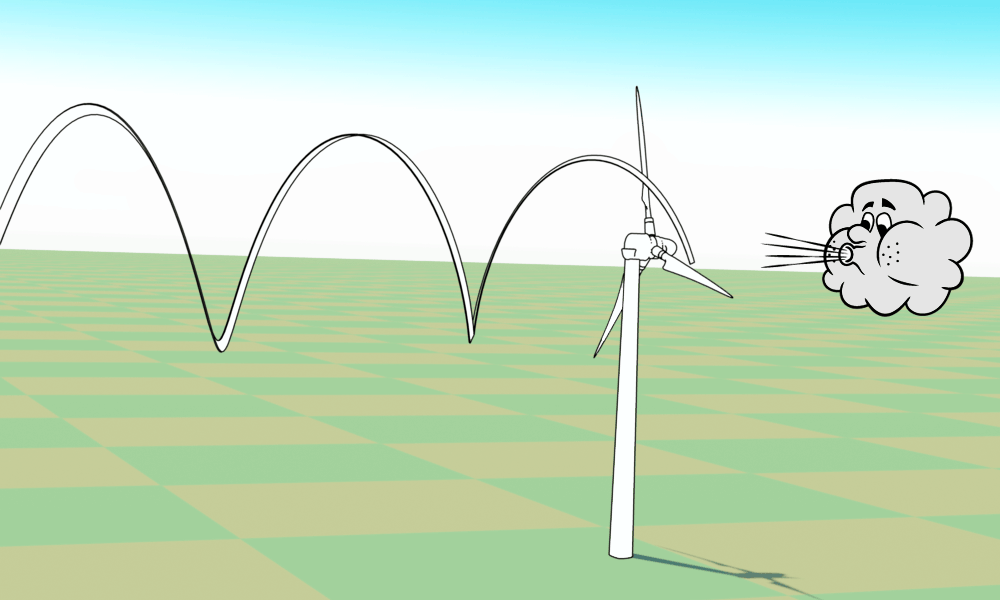
So now we have a found a sufficient number of clues to conclude that low dimensional vortices are linked to infrasound. Just as we've given a definition for ultrasound we can do the same with infrasound. You need to keep in mind that very large (macrocyclic) or very small vortices (microcyclic) do not produce infrasound or ultrasound, nor audible sound. But just like their mesocyclic versions they too produce low dimensional peripheral waves. But I'm sure that we humans simply do not interpret those waves as infrasound or ultrasound or audible sound because the equipment we use to catch any type of sound can not catch those waves. The maximum range limit for the size of a vortex to produce sound lies somewhere, at yet an unknown range, within the mesocyclic scale level.
So it is not the world around us that determines what is sound and what is not sound, it is our physical self, and how our senses are constructed, that determines what is audible sound and what is not, and it is the audio equipment we use and our science that determines what is infrasound and what is not. Other creatures in the universe, whether here on earth or somewhere in less reachable places can be born with a different perception of sound than that we have inherited. When we forget about our physical selves and we look at those waves from a wider perspective, then all those waves should be interpreted as equal. It is the same as with how the software of a computer reads the zeros and ones. Programmers can write an infinite number of applications with a wide range of purposes, but at the basis it is all still zeros and ones. It is just how the zeros and ones are interpreted by the software.
INFRASOUND = PRESSURE WAVES EMITTED FROM A LOW DIMENSIONAL MESOCYCLIC VORTEX WITH A PERIPHERY THAT HAS A DIMENSIONALITY LEVEL THAT IS LOCATED BEFORE THE START OF THE AMPLICONE (2.25D)
This means that the complete range of audible sound spans from 2.25D to 3.75D, thus a total scope of 1.5D. From 0.75D below the central balance point to 0.75D above the central balance point.
Sonic Booms and Explosions
Sonic booms and explosions are another source of infrasound. The reason why those phenomena produce infrasound is not explained on this page but on the page about inversion.
More on Sound
Sound Pitch
This is an easy one. If you browse back to the page about tension and compression, and look at the two images of the elephant and tea kettle side by side then you should be able to figure this one out yourself. You could have noticed that the tea kettle makes a lower pitch sound than the elephant does with its trunk. The spout of the tea kettle is also a lot smaller than the trunk of the elephant. This same difference in pitch we also observe in explosions. Small explosions make a high pitch sound, while bigger explosions make a lower pitch sound. In very large nuclear detonations the sound pitch is very low. And we also observe this same pattern with musical instruments. Small wind instruments make high pitch sounds while large instruments make lower pitch sounds. Just compare the sound of a small flute with the sound of a tuba. Or look at this (click) Wikipedia page about the pitch of brass instruments and compare the size of the brass instruments that are listed in the table. Another example is the sound that a whale makes compared to the sound that a dolphin makes.
A high pitch means that the vibrations are faster. A low pitch means that the vibrations are slower. This is because the smaller scales are lower dimensional and the larger scales are higher dimensional. In the lower dimensions time runs faster, in the higher dimensions time runs slower. It seems that yet again we are able to formulate a new definition:
SOUND PITCH = PROPERTY OF SOUND THAT DEPENDS ON THE SIZE OF THE VORTICES THAT PRODUCE THE SOUND WAVES
Again I need to state very clearly that we humans do not hear vortices. What we hear are the waves that are connected to these vortices. Just as the vortices have different possible sizes, so can a wave be of a small size or large size. A large size vortex connects to an invisible large size wave. And a small size vortex connects to an invisible small size wave.
So just as color reveals the scale size of the microcyclic vortices (see page about color), so does sound pitch reveal the scale size of mesocyclic vortices. One particular thing that you might have noticed is that both these phenomena are perceived to have different stages in them. The color spectrum has a distinct number of colors in them (red, orange, yellow etc), while sound is considered to have different notes (do, re, mi etc). The scale values don't just appear to gradually change from low to high, there seem to be distinct stages in them. Why this is so is still a mystery but I'm sure that there must be a logical explanation for this.
So... What Does This Mean?
So what implications does the information that is presented on this page have? Well, if you have given it a little bit of thought then you might have already concluded two things. First thing that you might have concluded is that the claims that are made on this page are not fully proven. The logic as to how these findings are made is fully explained but they are not tested. It still could be just clever linking of elements from facts that are just coincidental. Second thing that you might have concluded is that these claims are easy to proof.
_Edited_UnderCCBYSA2.0.jpg) Image by abbamouse (Flickr), under CC BY-SA 2.0 license. Image was edited with text and line |
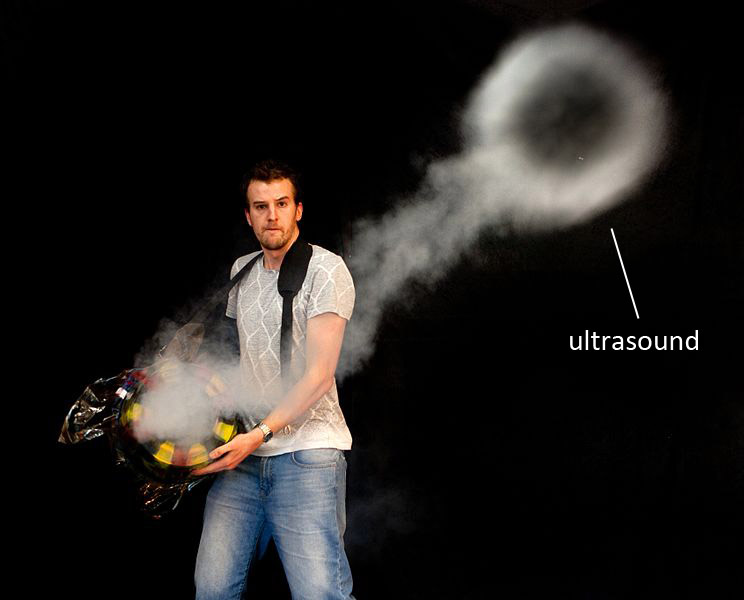 Image by Image by Chocolateoak (Wikimedia), under CC BY-SA 3.0 license. Image was edited with text and line |
All we need to do to test the theory is create the vortices that are linked to a specific type of sound, and then use infrasonic or ultrasonic audio equipment to detect these sound waves. For infrasound we can use a tornado generator, for ultrasound we can use a smoke ring generator. You need to be aware that the ultrasound is more directional. To detect the sound the ring has to be blown in the direction of the audio input device. This means that a large explosion also produces ultrasound (mushroom cloud = revolute), but it is harder to detect because the ultrasound is cast straight upwards into the sky. We know that large explosions also produce infrasound, but the infrasound from an explosion does not come from the mushroom cloud, that sound comes from the fallback vortex, which is something that is explained on the next page.
| All content on this site that is authored by Peter.A.Venis is licensed under the Creative Commons CC BY 4.0 license, unless otherwise mentioned. Most pages on this website also include material from other authors, under different licenses. Both the author's names and the licenses are mentioned in the file names whenever this information is known and can be provided. The presence of work from other authors on this website does not necessarily imply that those authors endorse the contents of this website. |
| A word that is often used on this website is the word 'vortex'. Many sources describe a vortex as a movement in a fluid that has a rotational flow. Yet many of the vortices that I describe on this website do not show a visible rotational flow. I took the liberty of using the word vortex for describing a phenomenon that had not been understood before, one that links together rotational and non-rotational movements. Even a movement in a straight line can in some cases be categorized as a vortex, if it is known that that movement is created by certain identical conditions. So keep in mind that the word 'vortex', within the context of the infinity-theory, has not the exact same meaning as other sources describe. |



